MOTAT marks a 50-year milestone
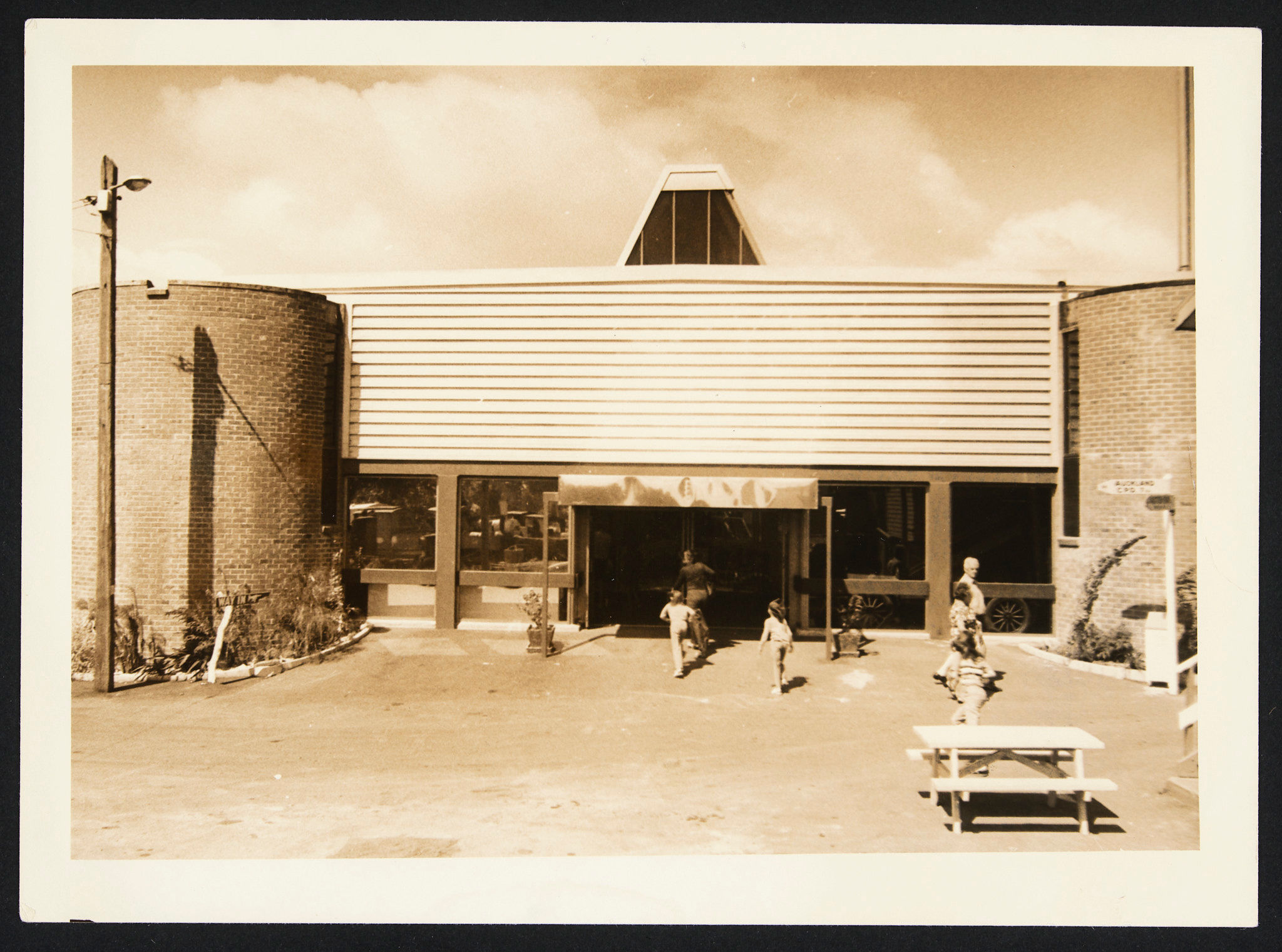
Fifty years ago, on March 31st, 1973, the Museum of Transport and Technology’s (MOTAT) Transport Pavilion was opened to celebrate the history of transportation. It was a milestone in the development of MOTAT, marking the opening of the Museum’s first purpose-built building – an architecturally designed building of glass, brick and steel, spacious enough to showcase MOTAT’s large-scale collection objects.
The Transport Pavilion was a dedicated display area for MOTAT’s transport collections, which would be showcased in the first permanent, purpose-built structure at MOTAT.
During 1971, funding had been secured from the Auckland Savings Bank, which gifted $100,000 for the construction of a permanent display building[i]. The gift was made during the Auckland Centennial celebrations of 1971[ii]. Discussions about the purpose of the building focused on creating “as much exhibition space as possible for road and rail vehicles. In addition, the building should provide a suitable workshop area for the restoration of trams and the maintenance of the running ones[iii]” – no small task by any means.
A sub-committee of MOTAT Board members and management was formed, and an invitation to submit design concept drawings was offered to Auckland-based architects, Price, Adams, Dodd. The first design - an open plan pavilion for displays, with an adjacent maintenance workshop to one side[iv] - was submitted and accepted by MOTAT’s Board and Management Committee, as well as the Trustees of the Auckland Savings Bank and Auckland City Council[v].

A sub-committee of MOTAT Board members and management was formed, and an invitation to submit design concept drawings was offered to Auckland-based architects, Price, Adams, Dodd. The first design – an open plan pavilion for displays, with an adjacent maintenance workshop to one side[i] – was submitted and accepted by MOTAT’s Board and Management Committee, as well as the Trustees of the Auckland Savings Bank and Auckland City Council[ii].
In this design, the architects presented a large, modern building made from a combination of brick, steel and glass, to create a spacious and light building that could display all forms of transport[iii]. The rectangular building had tram tracks in the centre, a mezzanine floor and circular brick towers at the corners that provided staircases and, on the ground floor, toilets. The mezzanine floor featured dedicated display areas[iv].
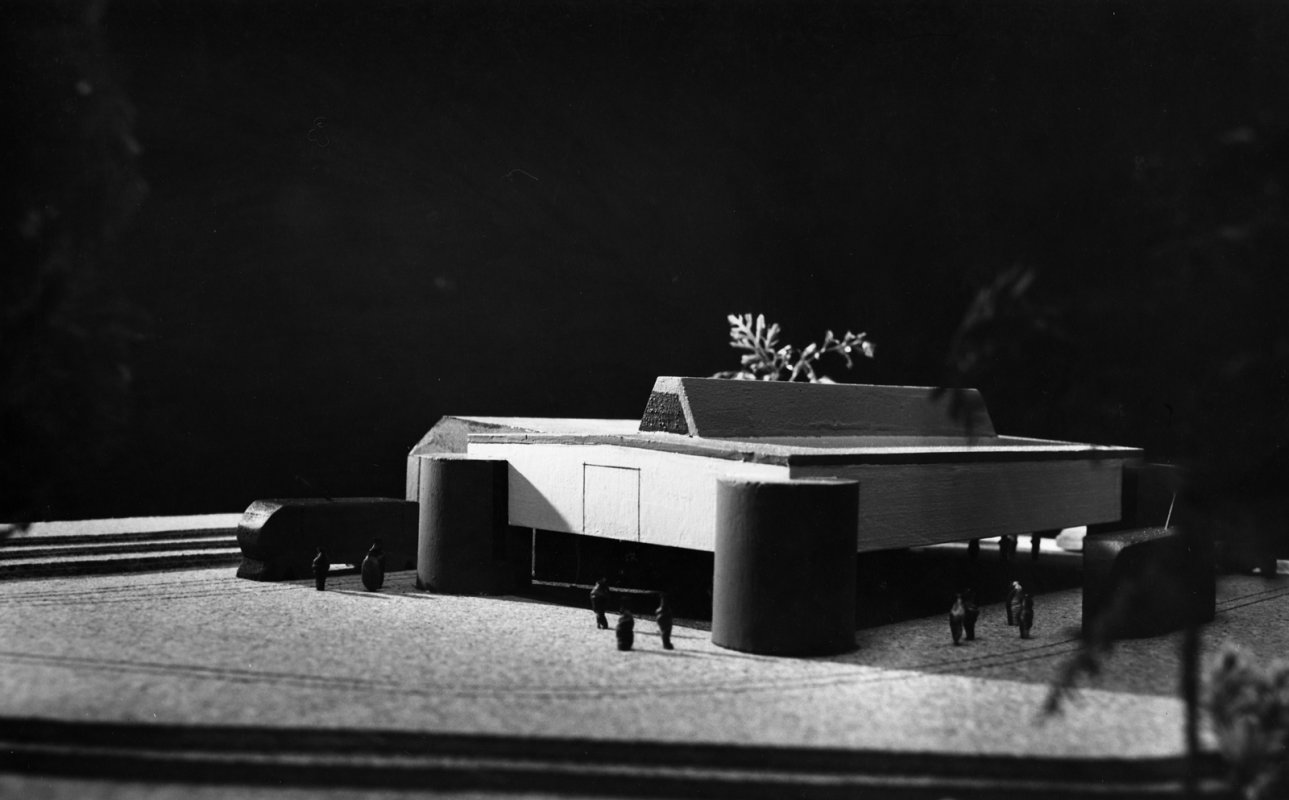
Building work commenced quickly and planning for the building to be opened on 31 March 1973 was soon underway[v]. Preparation for the opening exhibition was a priority for everyone at MOTAT, with the principle of: “‘embracing the story of all forms of transportation on land, sea and in the air, the display is designed to trace the history of the technological advancements of this century. The Museum’s fine collection of veteran horse-drawn vehicles, vintage motor cars and rail transportation exhibits will give land transportation the greatest representation, but the history of commercial aviation in New Zealand will be amply portrayed and for the first time, MOTAT will have a maritime display[vi]”.
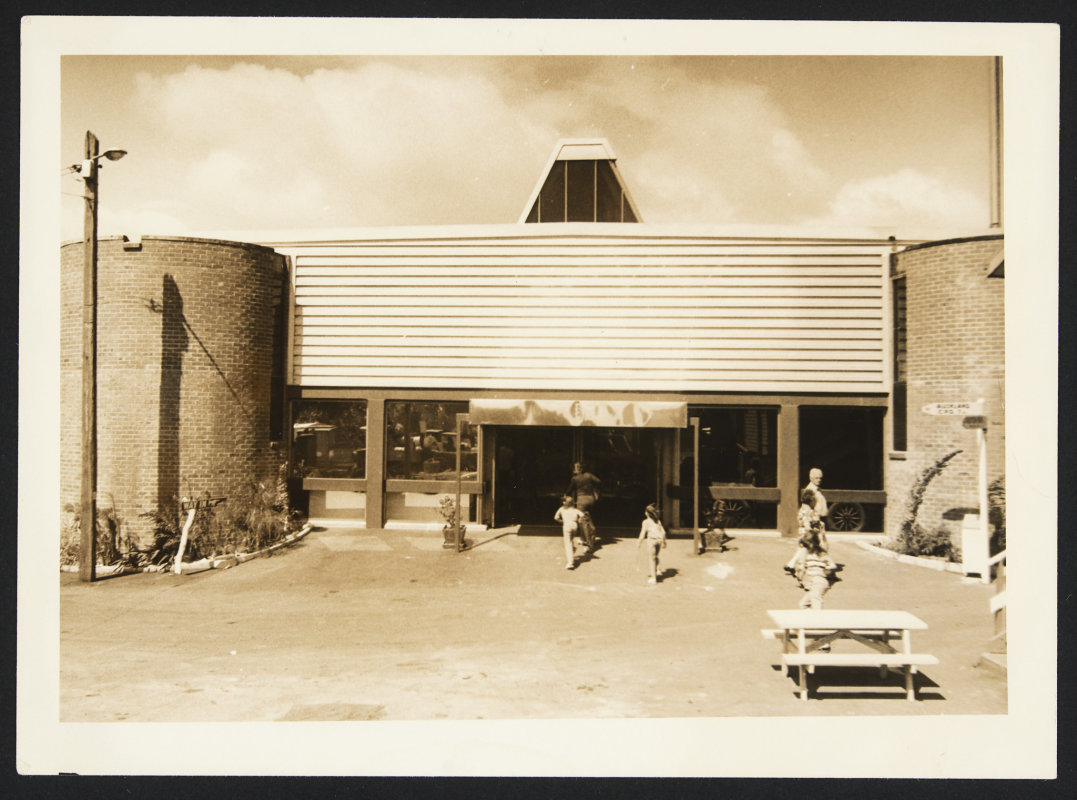
Grand Opening
On 31 March 1973, MOTAT’s Transport Pavilion was officially opened by the Governor-General, Sir Denis Blundell[vii]. The ceremony was attended by the Auckland City Mayor, Sir Dove-Myer Robinson, Transport Minister, Hon. Sir Basil Arthur, along with senior Board members from the Auckland Savings Bank and City Councillors[viii]. Several flypasts were performed by the Royal New Zealand Air Force and the New Zealand Tiger Moth Club, as well as a demonstration by the Auckland Radio Model Flying Club. Music was provided by the Royal New Zealand Navy band[ix].
For the opening exhibition, objects were selected to showcase a range of technologies represented in a variety of transport modes. With two floors of display area available, the large-scale items were chosen for the ground floor, with the mezzanine floor having a range of smaller, themed displays which – astonishingly – did include some rather sizable objects! Alongside MOTAT’s collection objects, the Transport Pavilion displays were supported by loans from the Auckland Vintage & Veteran Car Club, the Auckland Car Club, the Auckland Institute and Museum (Auckland War Memorial Museum), as well as items offered by private collectors.
The design of the Transport Pavilion had included tracks running down the centre of the building, so front and centre of the displays was the 1883 Mornington tram trailer (originally a horse tram) which operated during the late 19th century in the Dunedin suburb of Mornington. Being on the tracks enabled it to be rolled out of the Pavilion for Live Days. Surrounding the tram trailer, on all sides of the Pavilion, were a selection of road vehicles, many with trade-sponsored stands and information boards[x]. Some of the vehicles had been restored, with the restorations funded by local businesses including the Auckland Co-op Taxi Society and Stormonts Bakery.

Pre-motorised vehicles included 19th century horse-drawn wagons and carriages (both two-wheel and four-wheel examples), which showed the precision of engineered wood and metal for the wheels and axles, with a range of restored and unrestored examples presented. Road engineering and road surfacing was explained in a display of road construction techniques, with examples of the types of road surfaces use throughout New Zealand[xi].

Trains, Planes, Automobiles – and Tractors!
Racing vehicles showcased a 1908 Sizaire Naudin alongside Bruce McLaren’s Cooper Climax, and world champion Ivan Mauger’s racing motorcycle[xii]. Behind these was a giant inflatable Big Bib Michelin Man, and two replica Ship’s Bridges. These showed off the S.S. Monowai ship's bell and a display of the telegraph from the engine room from the MV Kokiri,which exploded in Wellington Harbour in 1941[xiii]. A large diorama of the Commonwealth Trans-Antarctic Expedition of 1957, led by Sir Edmund Hillary, showed one of the Massey Ferguson tractors used to cross the snow, flanked by mannequins dressed in snow suits. Interspersed between this were displays of vehicle number plates, artworks and advertising posters. The open space above was filled by a model of a parachutist, suspended from the mezzanine railings, cycles, model aeroplanes, a model helicopter, and a yacht. Mounted display cabinets contained domestic technology – laundry apparatus, cast-iron cooking pots and water pumps, and all of this was flanked by the flags of aviation companies, which were strung from the mezzanine floor.
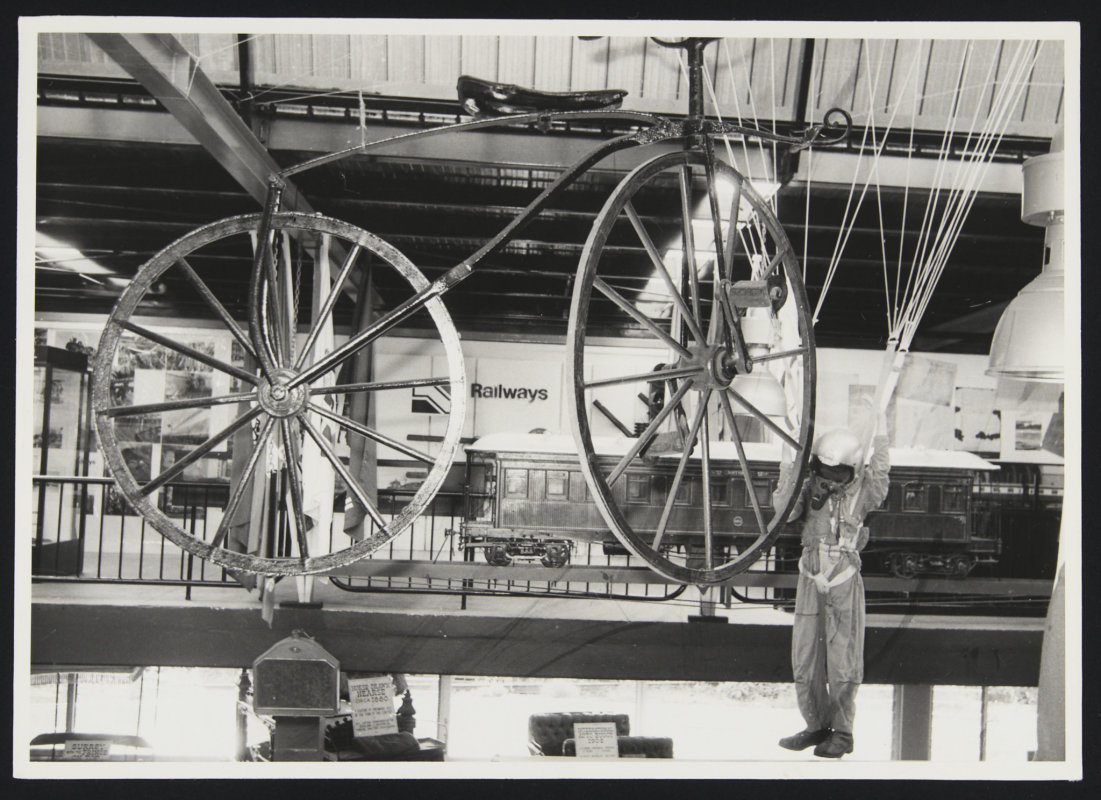
The Auckland Automobile Association (now part of the nationwide AA) was featured with a display on its history, which included a promotion of road rules, with the aim to prevent accidents but also promote car insurance by AA Mutual. MARAC Finance was also represented in a sponsored stand. The AARD Motor Services Association, established in 1918 to provide long distance transport and tourist services[xiv], was represented alongside the 1919 Hudson Super Six touring car.
Up on the mezzanine floor, displays were arranged under themes of road, sea, rail and air transport[xv]. The Walsh Brothers and the New Zealand Flying School displays showed illustrations, a model of the Manurewa 1 (the plane which succeeded in sustained flight in 1911), aviation training instructions, and a selection of photographs from the Leo White Collection. Nearby was the large cutaway section of the 1934 DC-3 Electra 10 ‘ZK-AFD’, flown by Union Airways Ltd and New Zealand National Airways Corporation and clocking up a career of 14,892 hours and 25 minutes with these airlines. Scale models of commercial aircraft flown in New Zealand filled the space and visitors were able to experience the “Airlines Theatrette”, a mini-theatre furnished with aircraft seats where visitors could sit and watch films of early aviation and tourist destinations in New Zealand[xvi].
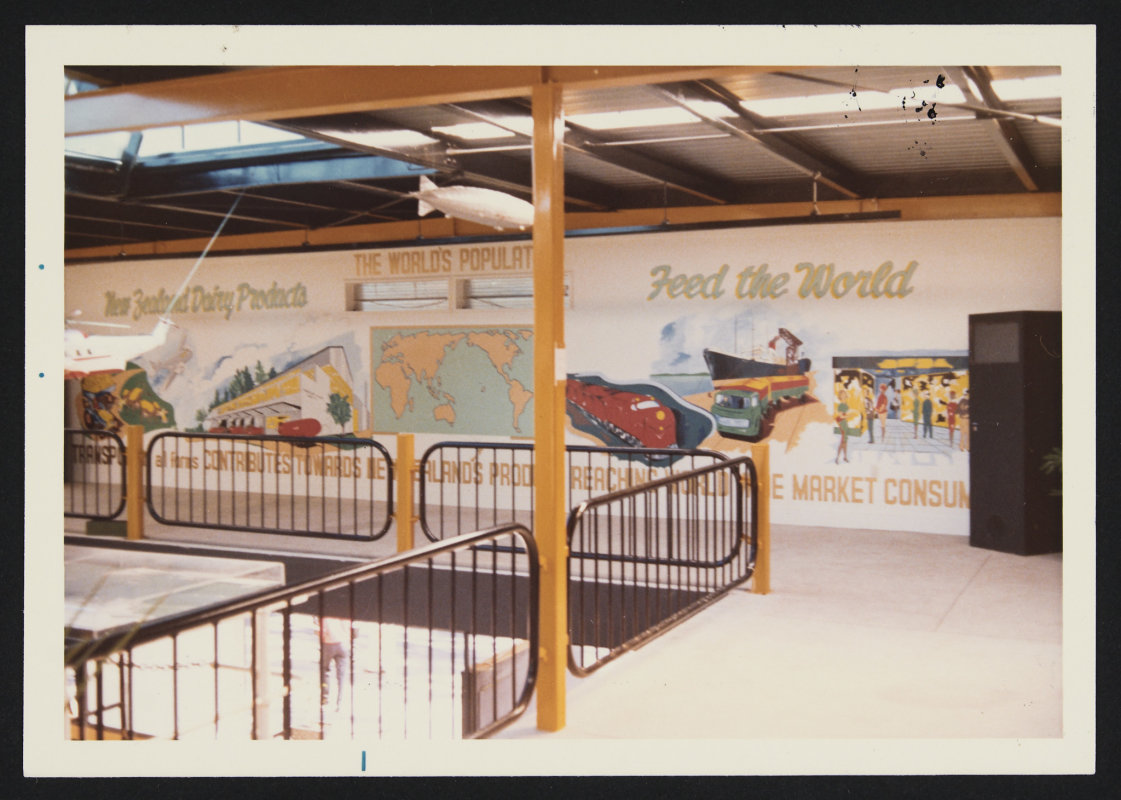
Young Designer
The rail display included a large and colourful New Zealand Railways (NZR) mural of a diesel locomotive alongside the competition winning "Locomotif" sculpture (designed by 11-year-old, Glenn Davis, winner of the “Name the Railway Tableau” competition). A model railway diorama and models of NZR Carriages were presented alongside a display dedicated to British inventor, Richard Trevithick (whose engineering work on steam engines and locomotives transformed this industry) and a model of the Flying Scotsman locomotive[xvii].
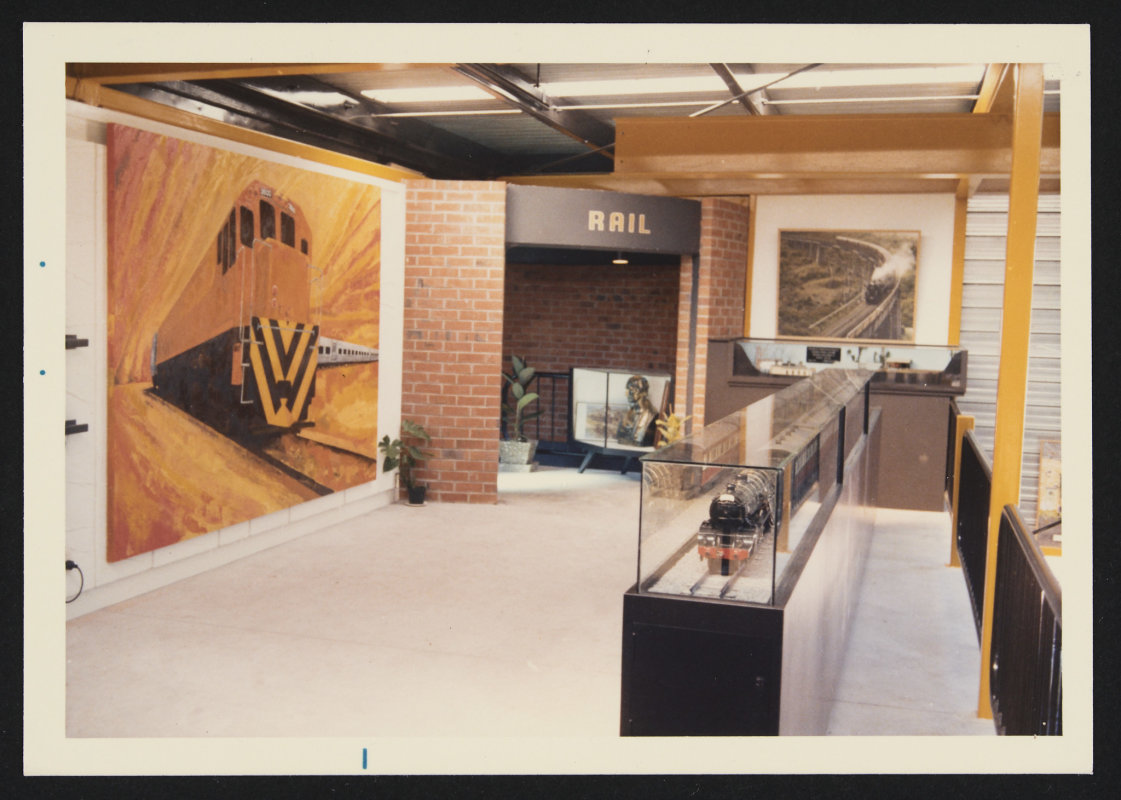
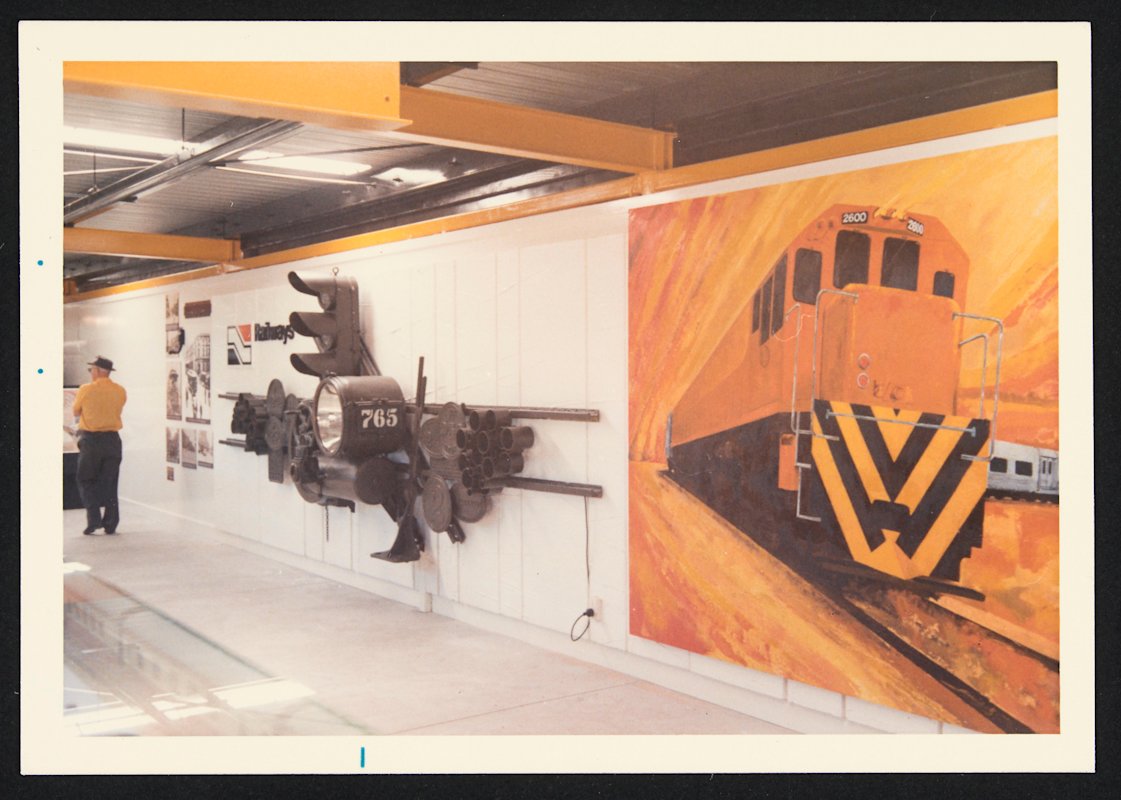
Maritime transport displays included a working submarine periscope off the US Navy Submarine Cabrilla, a scale model of the refrigerated cargo ship, MV Port Auckland, and several display cases of ships-in-bottles and historic diving apparatus (including a diving suit), which was supported by a hands-on interactive of a surface pump delivering air to the diving suit via a glass water trap[xviii]. Completing this theme was a diorama of the World War Two Battle of the River Plate, with a display of four scale-model ships from the Royal Navy, Royal New Zealand Navy and the Kriegsmarine.
Cutaway engines and gearboxes of vehicles stood alongside a motor scooter cutaway, allowing the inner-workings of engines and gears to show how energy transmission was achieved in motor vehicles. Next to these, was the elaborate scale-model of the British Royal Coronation Coach.
The original design of the Transport Pavilion had allowed for open, outdoor courts that could be used on the popular Live Days for horse carriage rides and hay trailer rides. Unfortunately, these courts were abandoned due to cost escalations[xix], but the thrill of opening the first permanent building and a dedicated exhibition remained a highlight for MOTAT’s management committee[xx]. This excitement was supported by visitors to MOTAT, which saw visitor numbers reach an all-time high of 191,648[xxi]. Visitors were also able to purchase a souvenir Exhibition Guide (sold for 25 cents) containing the names of the items displayed.
A Cohesive Exhibition
The grand opening of the Transport Pavilion was a significant moment for MOTAT and its staff. The ceremony was covered in a variety of publications, including being featured on the cover page and in the lead article of the May 1973 issue of the AGMANZ News (Art Gallery and Museum Association of New Zealand). The Auto-Age magazine wrote “aside from shelter for its more valuable acquisitions, the Pavilion at last gives MOTAT a boost towards a permanent display programme. For years collections have been crammed onto whatever floor or shelf space available, severely limiting the room available for public viewing’[xxii].
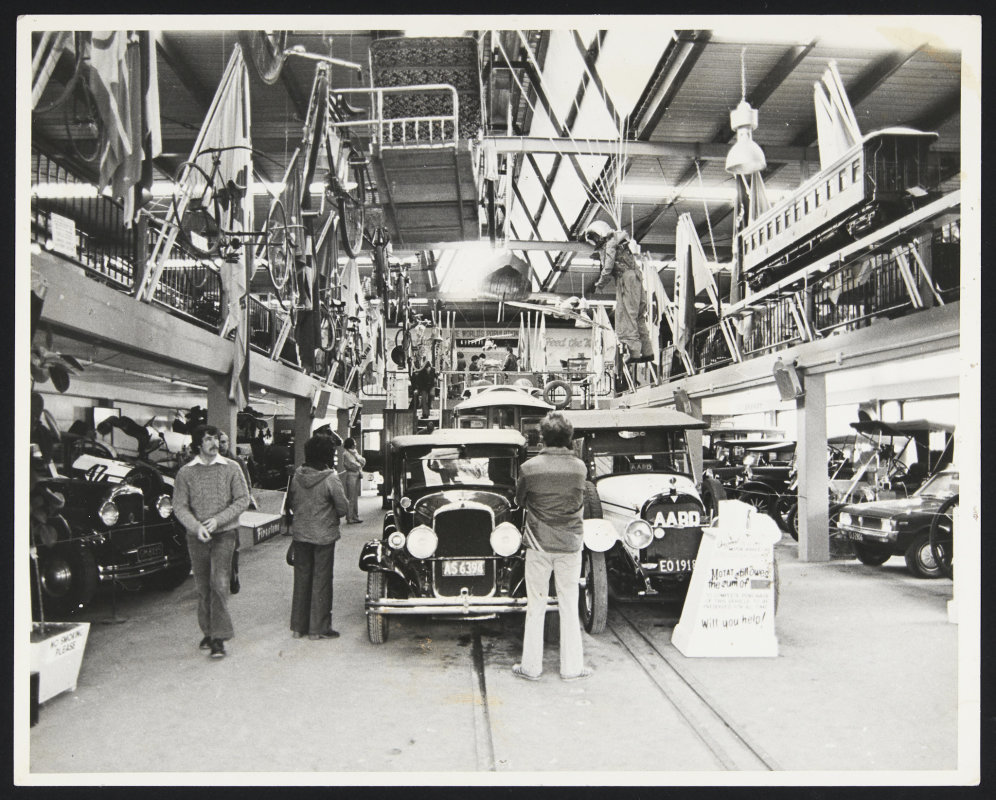
MOTAT’s visitors experienced a building and cohesive exhibition, and the successes of the Transport Pavilion would go on to inspire the Pioneers of New Zealand Aviation Pavilion, which opened on 2 April, 1977, as well as the Steam Pavilion, and unrealised Rail Pavilion[xxiii]. The subsequent years would see the Transport Pavilion displays cleaned and cared for by the Road Transport section, including dedicated weekly checks of tyres and engines, which ensured the displays looked smart for visitors and the objects were preserved[xxiv]. An inventory was also carried out in 1978 as part of an attempt by the museum to “accession and catalogue all exhibit material.”
Over the years, the Transport Pavilion would see some changes to the displays – generally through the addition of newly acquired objects or those that had been recently restored. Throughout the years, however, the guiding principle to showcase a range of transportation technologies and advancements remained clear, right through to the repurposing of the building in the late 1980s.
Sources
[i] MOTAT Museum News, Annual Report 1972, p2
[ii] Ibid and Papers Past
[iii] ibid p2
[iiiv] Adams Dodd Price Paterson (accessed 23/11/2022)
[v] MOTAT Museum News, Annual Report 1972, p2., p7
[vi] AGMANZ, p7
[vii] MOTAT Transport Pavilion handout,
[viii] Museum News, MOTAT, September 1972, p12
[ix] Museum News, MOTAT, January 1973, p2
[x] Museum News, MOTAT, March 1973, p2
[xi] AGMANZ, p7
[xii] Ibid, p7
[xiii] Transport Pavilion catalogue (all pages)
[xiv] Ibid, page 6.
[xv] AGMANZ, p7.
[xvi] AGMANZ, p7
[xvii] https://natlib.govt.nz/records/22483492 (accessed 6/1/2023)
[xviii] AGMANZ, p7
[xix] Ibid.
[xx] Ibid.
[xxi] Ibid.
[xxii] Museum News, MOTAT, March 1973, p2.
[xxiii] Ibid, p4
[xxiv] Museum News, March 1974, p4
[xxv] Museum News, June 1973, p3
[xxvi] Museum News, December 1982, p13
[xxvii] Museum News, June 1980, p16
Story by Belinda Nevin – Curatorial Research Manager